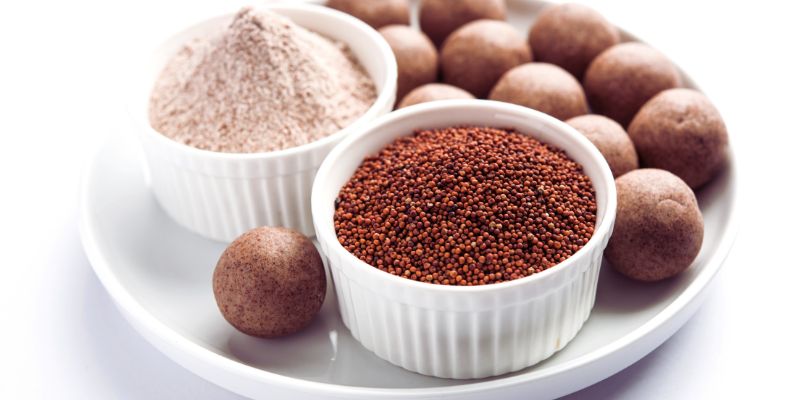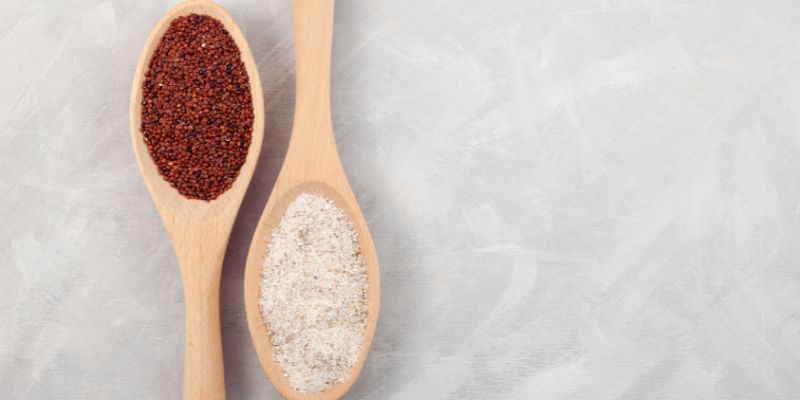Is Ragi Good Or Bad For People With Diabetes: A Complete Understanding
Maintaining steady blood sugar levels in diabetes calls for cautious food decisions; many questions have been raised about whether some foods, including ragi, fit their diabetic diet. Popular in many countries, ragi, also called finger millet, is a grain with great nutritional value. Is it safe for those with diabetes, though?
The effects of ragi on blood sugar, its nutritional value, and how best it fits into a diabetic diet are explored in this article. Knowing the advantages and drawbacks of ragi inclusion into your diet will enable you to make wise decisions. Let's explore whether your diabetic diet might benefit from this ancient grain.

What is Ragi?
Ragi is an ancient grain mostly farmed in Africa and South Asia. Traditional diets have included it for millennia because of its great nutritional value. Ragi is packed in dietary fiber, iron, and calcium and has become a popular healthy food choice. This gluten-free grain can be a great substitute for wheat or rice for people with gluten sensitivity.
Nutritional experts have drawn interest in its slow-digesting character. Ragi is a healthy choice for those with diabetes since it includes complex carbs that gently release glucose into the bloodstream. How, then, does this influence blood sugar levels? Does the nutritious value of ragi exceed any possible diabetes risk?
Nutritional Benefits of Ragi for Diabetics:
Particularly for those with diabetes, ragi is a powerhouse of health advantages since it is bursting with important minerals. Ragi stands apart for this:
- Rich in Dietary Fiber: Ragi's high dietary fiber content aids digestion's slowing down process. A crucial component of diabetes control, this helps avoid rises in blood sugar following meals.
- Low Glycemic Index: Those with diabetes are advised to eat foods low on glycemic index (GI). Ragi has a moderate to low GI; hence, it increases blood sugar levels gradually instead of rapidly.
- High in Antioxidants: Ragi has polyphenols and other antioxidants to lower inflammation and raise insulin sensitivity. These elements support improved management of blood sugar.
- Iron and Calcium Content: Calcium and iron are crucial for common issues in diabetes, bone health, and anemia prevention, and Ragi is a fantastic provider of both.
Ragi's nutritional profile qualifies it as a suitable alternative for controlling blood sugar and guaranteeing general health. Still, sensible amounts are recommended.
Can Ragi Raise Blood Sugar?
Although ragi offers several advantages for diabetics, one should carefully consider how it influences blood sugar levels. For persons with diabetes, food's glycemic load (GL) is crucial. Ragi has a moderate glycemic load; eating big amounts could cause blood sugar levels to rise. Still, the likelihood of a quick sugar surge decreases when drank in moderation and combined with protein or fat.
To assist in balancing the effect on blood sugar, for instance, create a ragi porridge and include nuts or seeds. Even if they have health advantages, keeping an eye on your blood sugar levels is vital when including new foods. To customize ragi intake to your particular needs, always best to speak with a nutritionist or healthcare expert.
Best Ways to Consume Ragi for Diabetics
Including ragi in a diabetic's diet calls for cautious cooking. These are some ragi consumption techniques that would help people with diabetes:
- Ragi Porridge: A low-calorie, filling breakfast could be a basic, warm ragi porridge prepared with water or low-fat milk. Including nuts and seeds will boost its fiber and protein levels, supporting blood sugar control.
- Ragi Idli or Dosa: Enjoying ragi flour in classic Indian dishes like idli or dosa might be a terrific way to appreciate this grain without appreciably increasing blood sugar levels. To make a healthy dinner, team it with protein and vegetables.
- Ragi Roti: Ragi can also be prepared flatbreads or rotis. Toss ragi flour with other whole grain flour or include leafy greens into the dough to improve the nutritional content and lower the glycemic impact.
- Ragi smoothie: Combine ragi flour with low-fat yogurt, a little cinnamon, and a few seeds for a cool snack or post-workout meal. That can give ongoing energy without causing blood sugar spikes.
Including ragi in these methods will help you maintain your blood sugar under control and enjoy its advantages.

How Much Ragi Can Diabetics Eat?
Portion control is vital when eating food high in carbohydrates, particularly ragi. Ragi has a low glycemic index. Hence, even if overindulging in it can cause blood sugar problems. For most persons with diabetes, one serving of about 30 to 40 grams of ragi flour per day is considered safe, although this can vary depending on personal needs and degree of exercise.
Combining ragi with fibrous vegetables, yogurt, eggs, or nuts and foods strong in protein helps reduce its effect on blood glucose. Including new foods like ragi into your diet helps you to have regular blood sugar tests. That will let you specifically understand how ragi influence your blood sugar levels and modify your consumption.
Is Ragi Good or Bad for Diabetics?
Ragi can be a good addition to a diabetic diet, provided it is eaten in moderation and cooked with the correct components. Its low glycemic index, great fiber count, and nutritional value make it a wise choice for people with diabetes. Still, it's crucial to be aware of portion amounts and combine them with other foods that stabilize blood sugar, such as protein and healthy fats.
Although ragi can have several advantages overall for those with diabetes, it's always advisable to see a dietician or healthcare professional before changing your diet significantly. That will make sure the foods you choose complement your long-term health objectives.
Conclusion:
Because of its high fiber content, low glycemic, and rich nutritional value, ragi might complement a diet suitable for diabetes. Moderating ragi and combining it with other nutritious foods will assist in avoiding blood sugar surges. Remember portion control, as, even healthful grains like ragi might influence blood glucose if consumed too much. Monitoring your blood sugar and seeing a nutritionist will help you to enjoy ragi and properly control diabetes.












